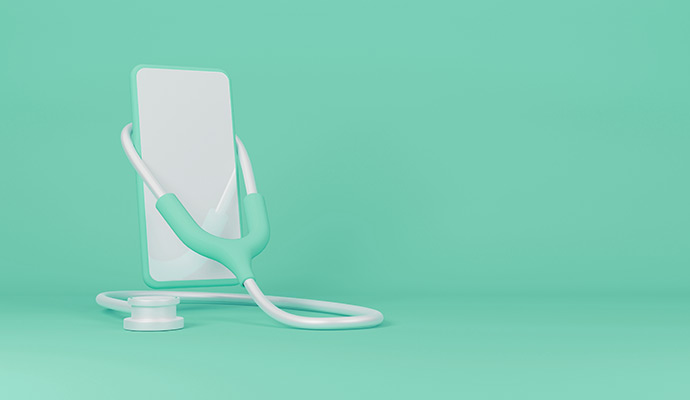50% of Veterans with OUD Used Audio-Only Telehealth to Access Medication
Most veterans with opioid use disorder used telehealth to access treatment, with half engaging in phone-only visits, highlighting the importance of access to audio-only services, new research shows.

Source: Getty Images
- Most opioid use disorder (OUD) patients used telehealth to access medication, and of these, about 50 percent participated in telephone-only visits rather than video visits, according to a study published in JAMA Network Open.
The study included data for Veterans Health Administration patients who received medication for OUD between March 23, 2020, and March 22, 2021. Researchers examined modalities used to access OUD treatment and 90-day retention, that is, patients having at least 90 days of coverage for buprenorphine, an OUD medication.
They analyzed data for 17,182 patients, of which 92.2 percent were male, 82 percent were White, and 94.8 percent were non-Hispanic.
Researchers found that around 38.1 percent of patients had at least one video visit, 49.6 percent had at least one telephone visit but no video visit, and 12.3 percent had only in-person visits.
They also found that patients participating in at least one telehealth visit via phone or video were more likely to continue using buprenorphine than those with in-person visits.
Researchers further observed that among patients who started buprenorphine treatment after the pandemic began, 90-day retention was higher for those engaging in video visits than telephone-only. But among patients who started treatment before the pandemic, retention was the same for those who had video and phone-only visits.
"People with opioid and other addictions already face so many barriers to care and some sub-groups face additional disparities," said Allison Lin, MD, senior author of the study, associate professor of psychiatry at the University of Michigan Medical School, and research scientist at the VA Ann Arbor Healthcare System, in a press release. "It's really important to have as many options as possible, including phone and video, to make it easier for patients to engage in care."
The research highlighted the disparities in telehealth access among various sub-groups. Patients who were younger, male, Black, Hispanic, of unknown race, and with specific mental health/substance use comorbidities were less likely to engage in telehealth. Further, of those who participated in telehealth, older, male, Black patients and those experiencing housing instability were less likely to have a video visit.
"Keeping telephone-based telehealth as an option for buprenorphine care moving forward may be important for veterans who have been less likely to access video telehealth, including those who are over age 65, Black, or who have unstable housing situations," said Madeline Frost, PhD, first author of the study, and postdoctoral fellow at the University of Washington, in the press release.
Telehealth usage has dropped significantly since its peak in 2020, with one report showing a 37-percent decline in visit volumes, from 73.7 million in the second quarter of 2020 to 46.4 million in the first quarter of 2022.
But even amid this decline in overall use, certain specialties continue to rely on telehealth to expand access to care.
A recent survey showed six out of seven OUD physicians were interested in making telehealth flexibilities permanent. More than half of the survey participants stated that telehealth efficacy exceeded their expectations, and over 75 percent noted they would like to continue telehealth use post-pandemic.
Further, recent research has backed telehealth's efficacy in extending buprenorphine treatment. One study published in September showed that the expansion of telehealth during the COVID-19 pandemic was associated with an increase in the use of OUD medications and a reduction in the odds of medically treated overdoses.
The study examined data from the Centers for Medicare & Medicaid Services divided into two periods: before the pandemic (from September 2018 to February 2020) and during the pandemic (from September 2019 to February 2021).
A larger percentage of beneficiaries in the pandemic cohort received OUD-and behavioral health-related telehealth services, as well as medications for OUD, such as methadone, buprenorphine, and extended-release naltrexone, compared to the pre-pandemic group.
